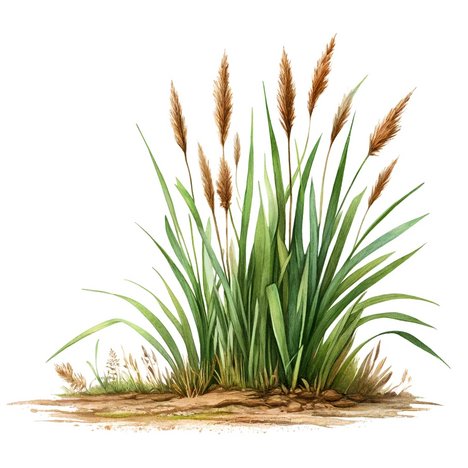Reed grass

Reed canary grass is a plant that is often used as a privacy screen or decoration in the garden. But is reed canary grass also suitable for dogs? In this article, you'll find out what reed canary grass is, its advantages and disadvantages for dogs and how you can plant it safely in your garden.
What is reed grass?
Reed grass is a collective term for various types of grasses that grow in damp locations. The best known are the native reed(Phragmites australis) and the Chinese reed(Miscanthus sinensis). Reed grass is characterized by long, narrow leaves and tall stalks that turn brown in autumn and remain standing in winter. Reed can grow up to four meters high and forms dense clumps.
What are the benefits of reed canary grass for dogs?
Reed canary grass is basically non-toxic for dogs. This means that it does not cause acute symptoms of poisoning if a dog eats it. However, this should not become a habit, as reed grass contains no nutrients for dogs and can lead to digestive problems.
One advantage of reed grass for dogs is that it provides a natural privacy screen. This can protect the dog from stress or distraction when in the garden. In addition, reed grass can serve as a toy or activity when the dog sniffs or nibbles on it.
What are the disadvantages of reed grass for dogs?
One disadvantage of reed grass for dogs is that it can be very sharp-edged. This is particularly true of Chinese reed, which has small teeth on the edges of its leaves. These can injure the dog's skin or mucous membranes if it licks or chews on them. This can lead to bleeding, inflammation or infection.
Another disadvantage of reed grass for dogs is that the sap of the plant can cause phototoxic reactions. This means that the dog's skin becomes more sensitive to sunlight and burns more easily. This can lead to redness, blisters or scars.
How can you safely plant reed canary grass in your garden?
If you want to plant reed canary grass in your garden, you should take some precautions to protect your dog. Here are some tips:
- Choose a variety of reed canary grass that is less sharp-edged, such as the native reed.
- Plant the reed grass in an area that is not accessible to your dog, for example behind a fence or hedge.
- Trim the reed grass regularly to keep the stalks short and remove the leaves.
- Wear gloves when working with the reed grass to protect yourself from injury.
- Offer your dog alternatives to nibble on, such as chewy bones or toys.
Reed grass is a beautiful plant for the garden, but it also harbors some dangers for dogs. If you choose reed grass, you should make sure that your dog does not injure or burn itself on it. With a few precautions, you can safely plant reed canary grass in your garden and provide your dog with a natural privacy screen.
If you notice any signs of hypersensitivity or poisoning in your dog, you should see your vet immediately. We are not a substitute for a vet, but we try to be as accurate as possible. Every dog reacts differently and we recommend you get a second opinion or consult your vet if in doubt.
Stay healthy and take good care of your four-legged friend!😊